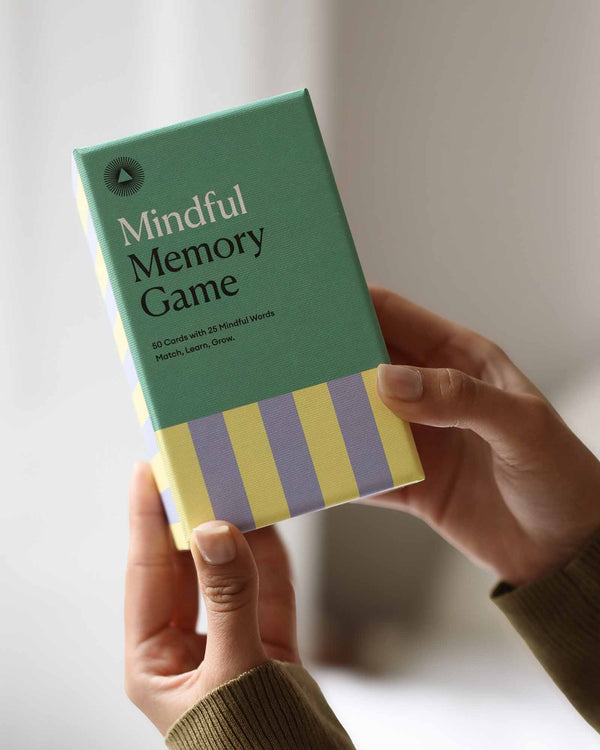How to Stay Focused and Work Uninterruptedly
by Intelligent Change
This article is all about… Wait, where is my power bar? Ah, here it is. So, the article, about attention, yes… Oh no! I forgot I had a dentist appointment this morning. Where is my phone, I need to call to reschedule...
Is this kind of chaotic thought process familiar to you? Maybe your interruptive thoughts are more fun than our example, but our guess is that either way, you’d be better off without them–at least while trying to focus on something.
Like, you’re trying to do this one thing, but there are several trains of thoughts and ideas rushing through your head, making it impossible to concentrate.
Or perhaps your problems start even earlier in the process: while you’re preparing for a task. What’s my main goal? What are my priorities for today? Which order of steps to follow?
If this kind of thought process is familiar to you–welcome, you’re at the right place.
And you’re definitely not alone. People can face concentration difficulties for a number of medical or psychological reasons. Some of them are low blood pressure, trouble staying awake, impulsiveness, overactivity, AD(H)D (Attention Deficit (Hyperactivity) Disorder), anxiety, depression, or stress.
If you’ve recently switched to the work-from-home regime, you may experiencing some challenges while trying to work productively and efficiently.
This article is applicable to any working and studying environment, and it offers a list of advice on how to stay focused and reach a whole new productivity level.
Eliminate Distractions
Before focusing on yourself, take a look around. What does your workspace look like? If you’re trying to raise your productivity in a messy environment, don’t bring your hopes up.
First things first–eliminate distractions. Unnecessary books, catalogs, toys, notebooks: basically any objects that you don’t use for work or don’t inspire you to be productive.
Try moving into a quiet area to work, or if that’s not possible, prepare a concentration-boosting playlist and isolate yourself from the outside chaos. We recommend checking out the Intelligent Change Spotify channel where you can find some amazing inspirational music for boosting your productivity and focus.
We assume that most of your work revolves around your computer and your phone. These digital spaces are destructive by nature, so try turning off notifications on your phone and closing programs and apps on your computer that are not essential for work.
You can also use apps and add-ons to block you from using social media while working. We recommend these three:
1. Rescue Time: a powerful time-management software available for Android, iOS, Linux, macOS, and Windows;
2. Cold Turkey: this is a website blocker. You can use it to block access to any website, including the internet itself (if you work offline and the internet is a distraction). It’s available for macOS and Windows;
3. Mindful Browsing: this one is not as harsh as Cold Turkey. It doesn’t block access to websites, but asks you if you’d like to visit them and reminds you that you could be wasting your time after ten minutes. It’s available only for Chrome.
Back to Basics: Get Enough Sleep
According to psychologist Abraham Maslow, human needs are hierarchically distributed. If the basic, physiological needs for food, water, and sleep are not satisfied, we can’t even think about attending the higher ones such as love, relationships, or self-actualization.
So, before asking how to stay focused and be more productive, check your sleeping cycles. If you sleep less than 6 hours per night, you’re most likely depriving your brain.
The recommended amount of sleep for adults is approximately 7 hours per night. People in their twenties are usually okay with 6-7 hours of sleep, but as we grow older, our brains and bodies call for more rest.
If you’re having trouble getting a good night’s sleep, try some of these tricks:
- Avoid tea and coffee after 5 pm (mint and chamomile tea is great alternative);
- Avoid using electronic devices before bed;
- Take time to yourself one or two hours before bed–enjoy a hot bath, read a physical book, or do some yoga.
Keep Your Brain and Body Fueled
While we’re on the subject of the lowest needs in Maslow’s hierarchy, remember that Snickers commercial with the slogan You’re not you when you’re hungry?
Don’t know about you, but we find it highly relatable. In case you didn’t know, that state has its name: hangry.
Hangry, adj: bad-tempered or irritable as a result of hunger.
This deadly combination is going to make you lose focus fast. Why? Because the brain uses some 20% of our daily energy intake, so if we don’t eat, the brain has no fuel, and we can’t work properly.
To avoid major hunger episodes, and the state of hangryness, try creating a balanced diet and remember that it has to suit you and your body. For some, balanced diet means having 4 or 5 regular smaller meals. If you don't feel like eating that often, a traditional 3-meal diet is fine as well, as long as you receive all the necessary fuels: protein, carbohydrates, and healthy fats.
Instead of eating a burger and fries or a chocolate pie in the evening as a reward for surviving your hungry and busy day at work, try taking time to have breakfast every morning, and bring some healthy snacks with you to work: nuts, salads, or fruit. That way, you won’t go out of fuel between the meals.
Besides food, there’s another essential element our brains and bodies crave–water.
Use a Planner
To keep track of their progress and move forward, people usually create to-do lists. Do you make them as well? If yes, how long is your to-do list? 5, 6, 10 bullets? A recent study found that only 17% of people are capable of using them properly.
What’s the catch?
The catch is that people have a hard time estimating the amount of time necessary for completing their tasks. To make things worse, we rarely overestimate the amount of time necessary for completing a certain task, but rather underestimate. The result? Unrealistically long daily task lists and consequent disappointment and stress.
However, there’s an improved solution - a planner joined with a flawless time-management technique: the Focus Time. The concept is to have four 30-minute working sessions, followed by short 5-minute breaks. After you complete the four sessions, you take a 30-minute break.
There are two ways of doing this: one is taking a blank notebook and designing it on the inside to serve as a planner. In that case, you could also download one of the many timer apps, or have a traditional timer if you don’t want to get distracted by your phone, to organize and prioritize your tasks.
The other way is much easier: you get a curated Productivity Planner. Productivity Planner by Intelligent Change is a structured daily planner based on the Focus Time Technique, designed to help you overcome procrastination, prioritize your tasks, and get more things done.
How to stay focused? Stick to your productivity planner.
If you decide to go with this method, check out this blog post, where Leticia Mooney, CEO of content marketing and strategy agency Brutal Pixie, explains how she uses the Productivity Planner to keep up with her busy schedule.
How to Prioritize Tasks When Using a Productivity Planner
When you make a list of tasks for each day, how do you know which ones to do first?
What we recommend is to prioritize the most difficult tasks. Why? Well, they won’t get any easier the more you put them off, but you will get more and more tired. Moreover, science shows that our productivity reaches its peak during the morning and early afternoon, so seize that part of the day for the hardest tasks.
Be Present in the Now
So, you’ve had some good sleep, a nice meal that gives energy, you’ve cleaned up your space, and you’re right on time with your first task according to your productivity planner. However, when you’re finally at your desk, you find yourself staring at the wall for half an hour not being able to focus. Why?
This is probably happening because you’re not present in the current moment. Perhaps you’re worried about the future or ruminating on a past event. What you need to do is clear your mind. Only if you’re doing what can be done now, can you influence what happens in the future, and consequently, prevent repeating your past mistakes.
But, how to stop intrusive thoughts that push you into the procrastination vortex? How do you practice presence?
One method we recommend is guided meditation. Take some 10 minutes each day to just clear your mind and learn how to be present here and now.
Another way to balance your negative thoughts so they don’t overwhelm you when you’re supposed to focus on your work, is to keep a gratitude journal. The Five Minute Journal is a curated gratitude diary that takes only 5 minutes of your day and can help you shift your mind into a state of positivity.
Whatever’s causing your lack of focus, we believe that the struggle is real. Sometimes, we can’t just take a week off whenever we need to. That’s why we need these tips and strategies, so we can adapt to the reality we live in and stay functional and productive.
Important takeaway: do satisfy your primary needs. Don’t harm your health by disrupting your sleeping and feeding cycles. Only when your belly is full and your brain rested, can you think straight, achieve a lot, and make long-term plans.











